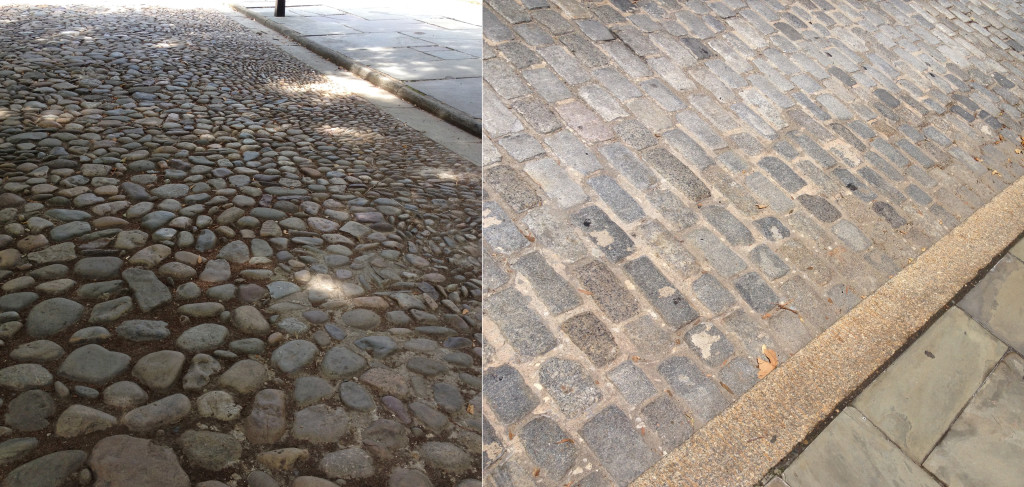Streets paved with stone are generally called “cobblestone” streets. But they’re not always made of cobblestone.

“Cobbles” are rounded stones worn smooth by water. “Belgian block” or “sett” is cut paving stone, usually granite.
Paul Wood calls paving-stone cutters “a breed unto themselves.” Unlike men who carved gravestones, an on-going project even in the best of times, paving-stone cutters were forced to move from city to city as projects finished and new work had to be found. Although they were better paid, the costs of travel soaked up the advantage. Paving-stone cutters had another big advantage, though. Their low exposure to the dust generated by the saws and polishing equipment in the finishing sheds meant they would not have died young of “stone cutters’ consumption” or silicosis.
The cutter split a one-by-three-foot block in half, then in quarters, and so on down to smaller blocks. The blocks were “faced,” trimmed and finished, over a “chipping tub,” which caught the waste. The work must have been backbreaking. All was muscle-powered. By the time steam came into use in stone-cutting, asphalt had elbowed out Belgian blocks.
Like wood, granite has a grain along which it splits more readily. The “hard way” of granite can be compared to the “end grain” of lumber. Paving stone was laid with the hard way up, for durability. A layer of gravel, perhaps in part from the chipping tub, then a layer of sand made the bed.
Road Paving: Asphalt here
Source: Paul Wood, “Tools and Machinery of the Granite Industry.” Early American Industries Association, 2009. Photos by Jean Huets.
Pingback:Road paving | Asphalt | JEAN HUETS
Pingback:19th Century streetscapes: Petersburg, Virginia | JEAN HUETS